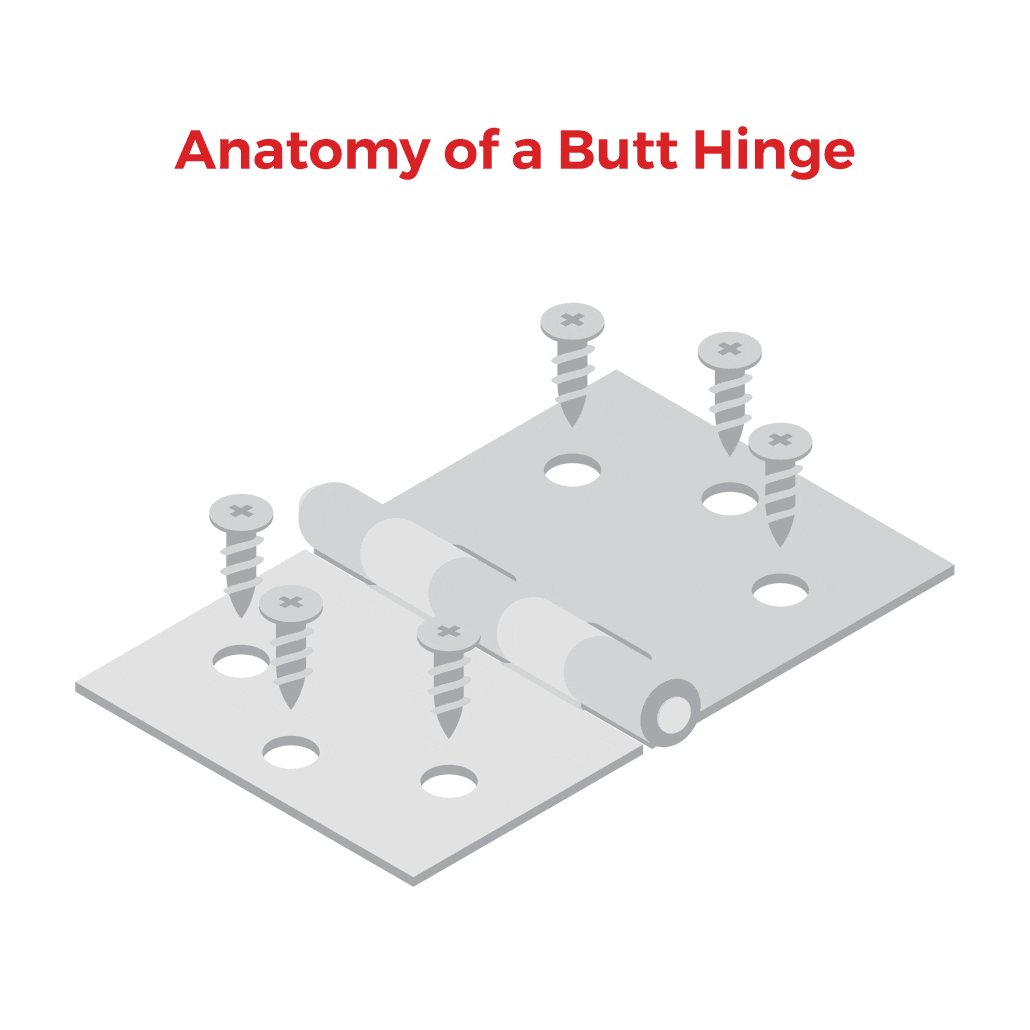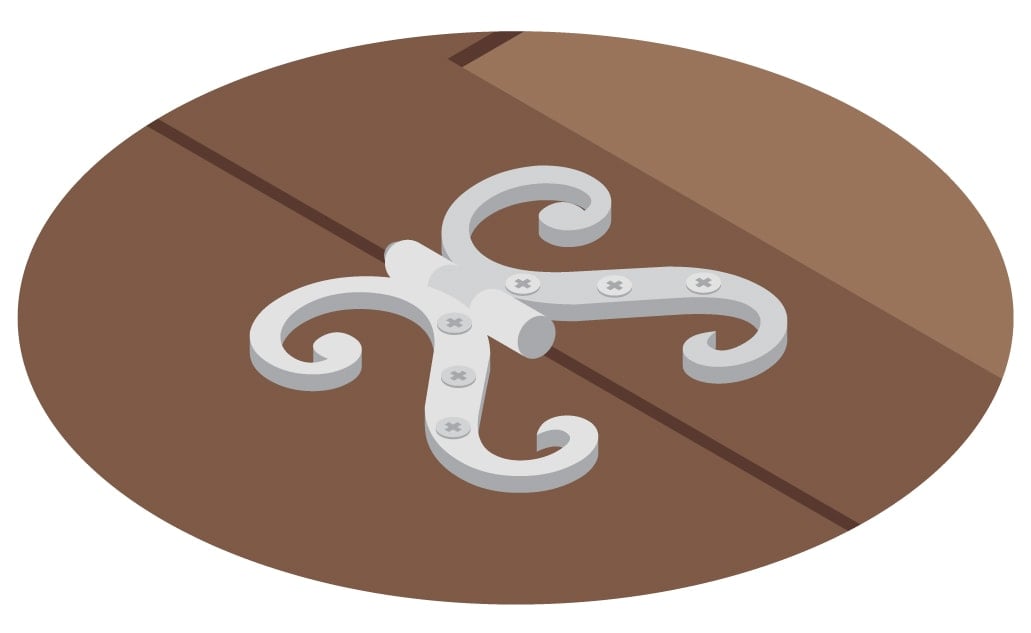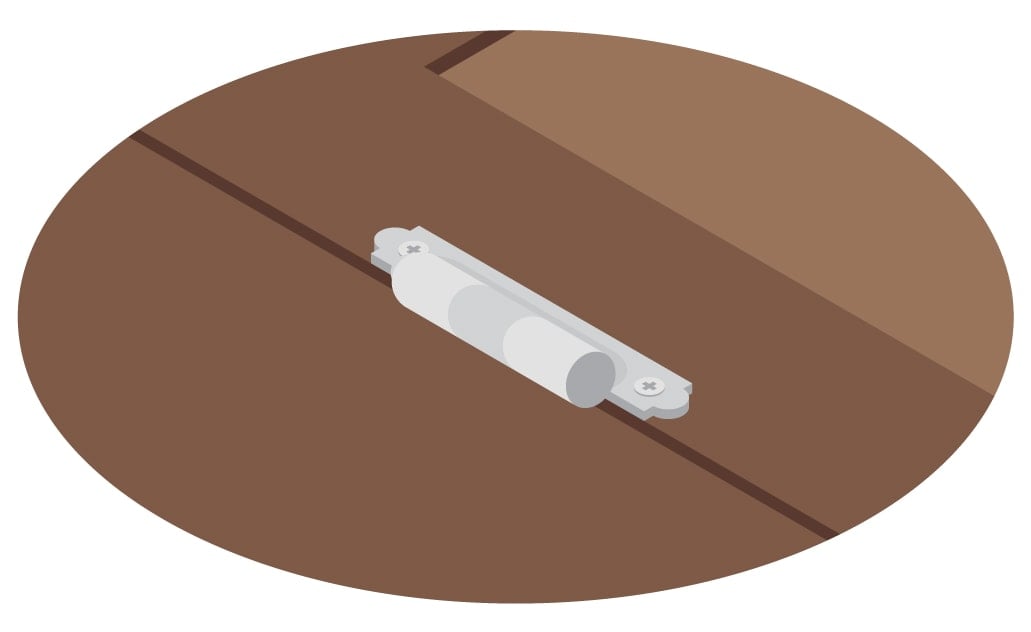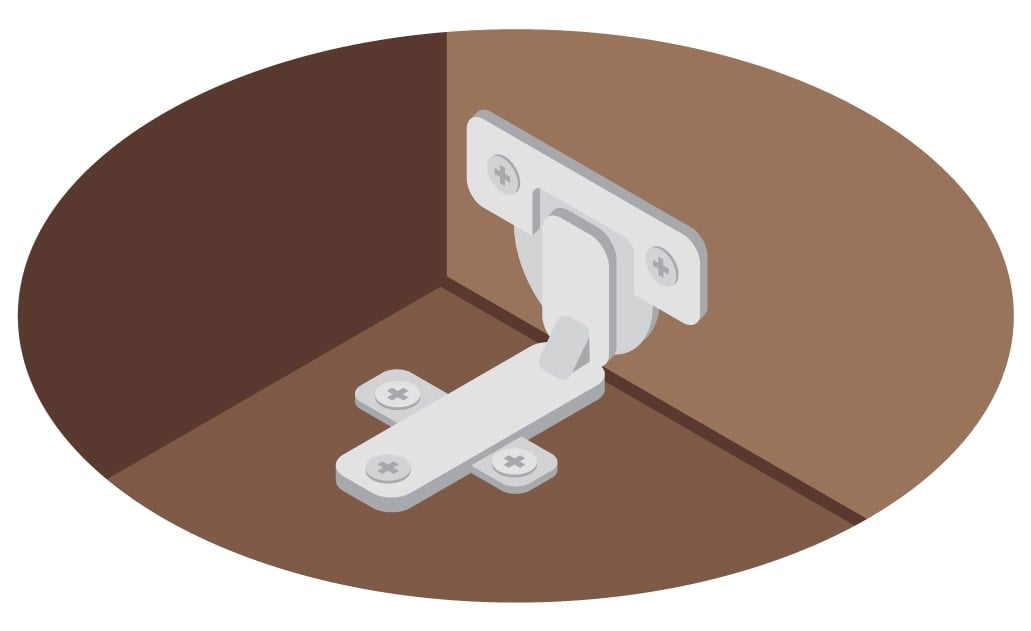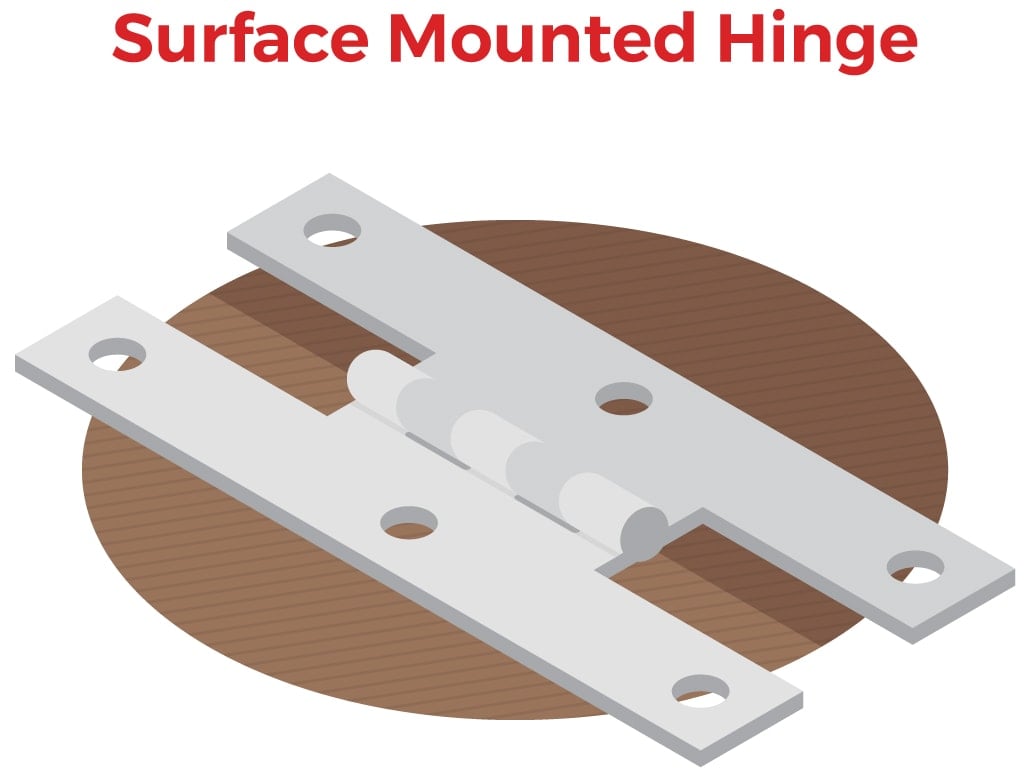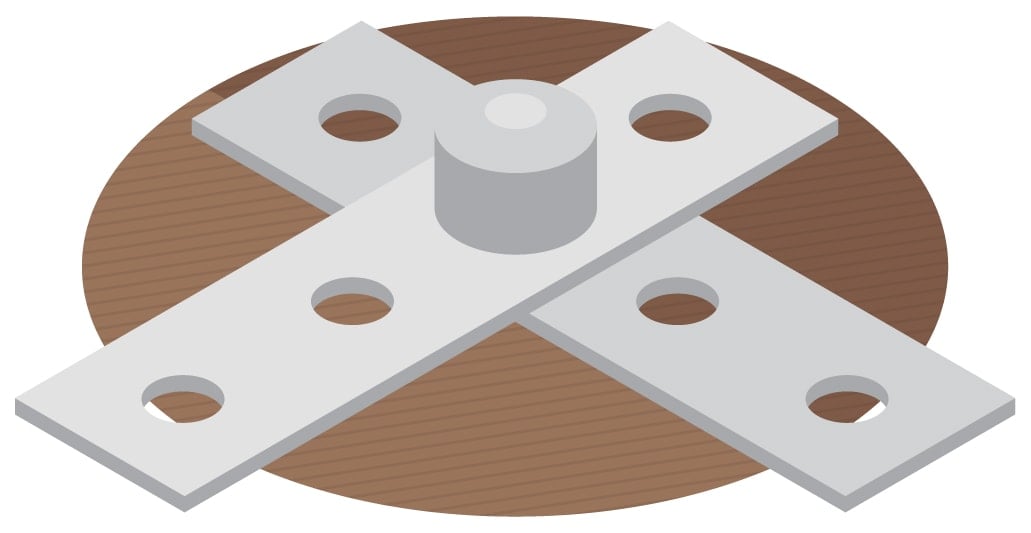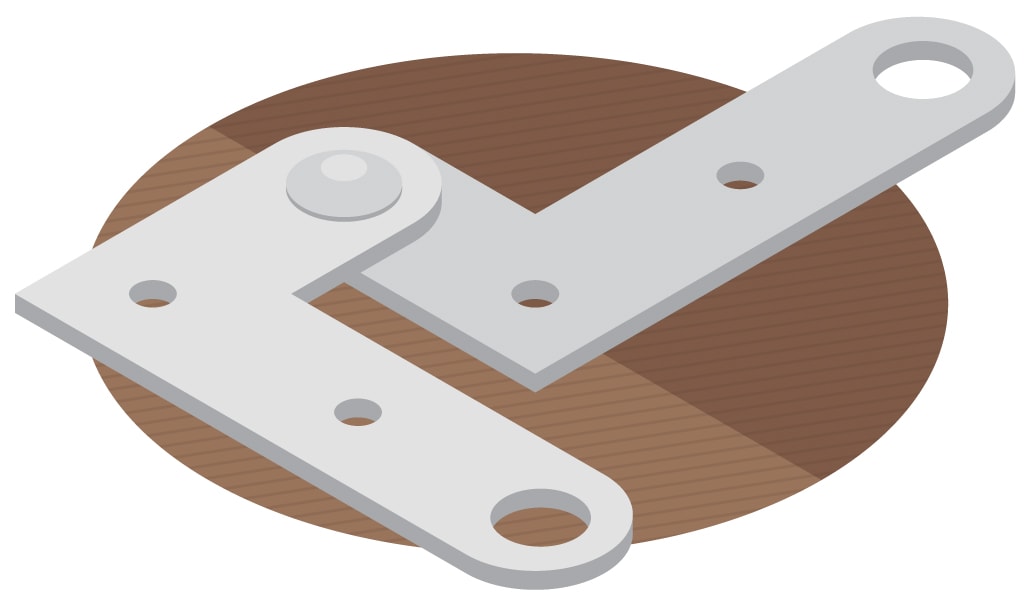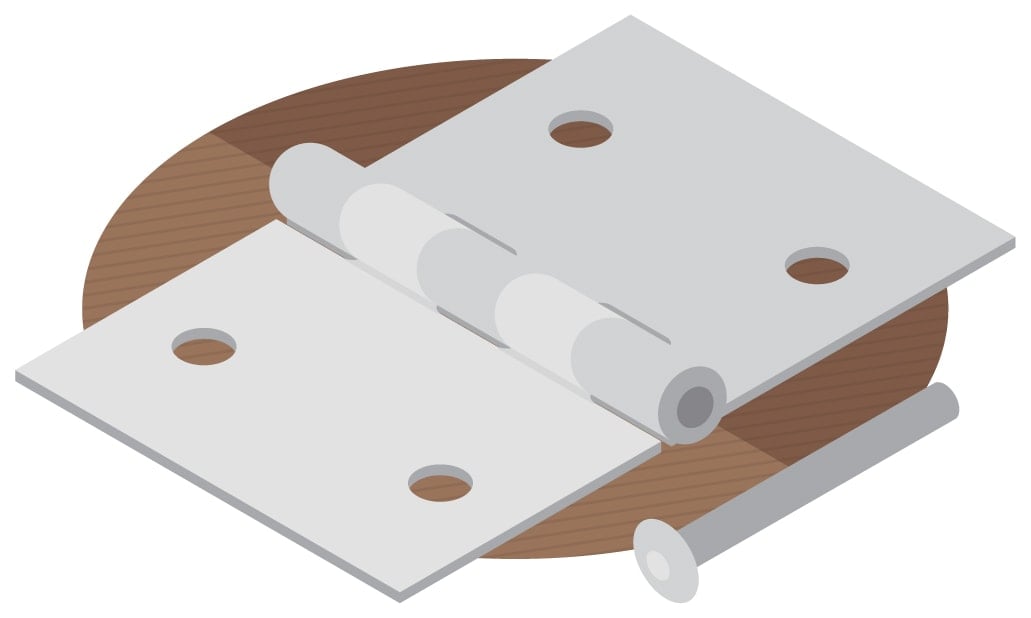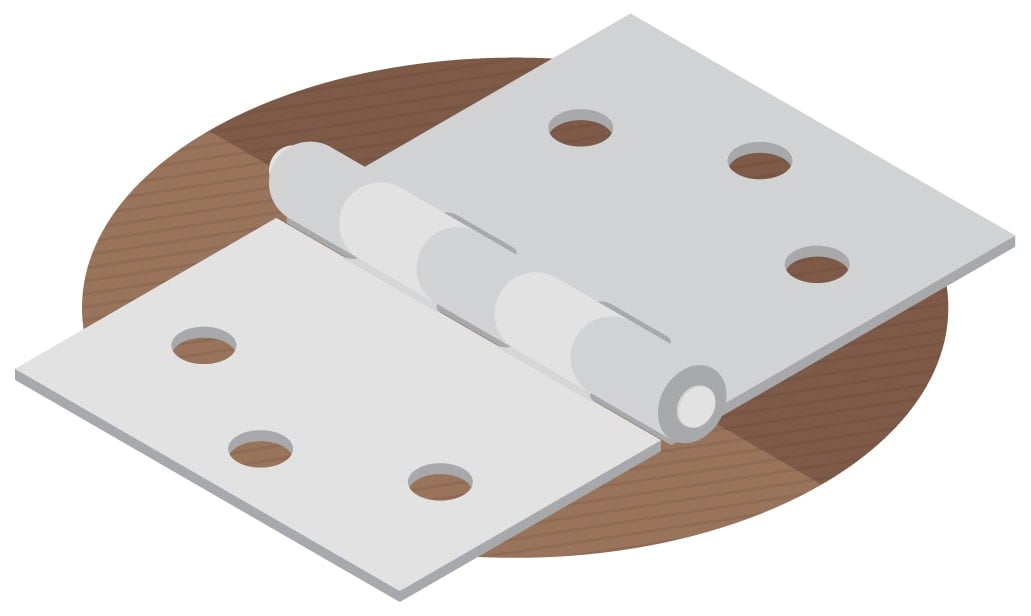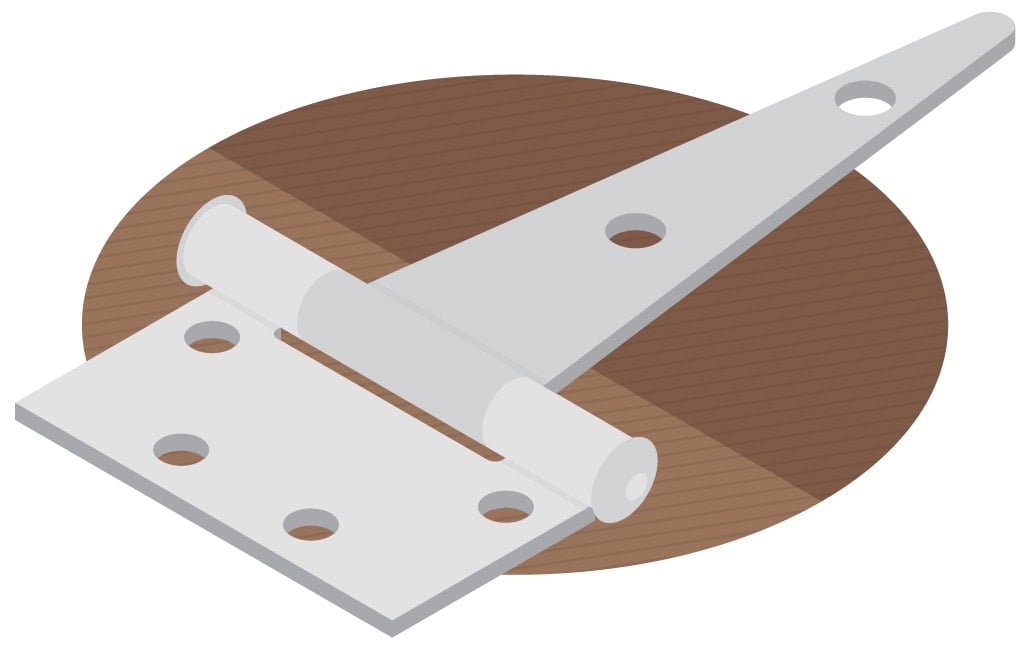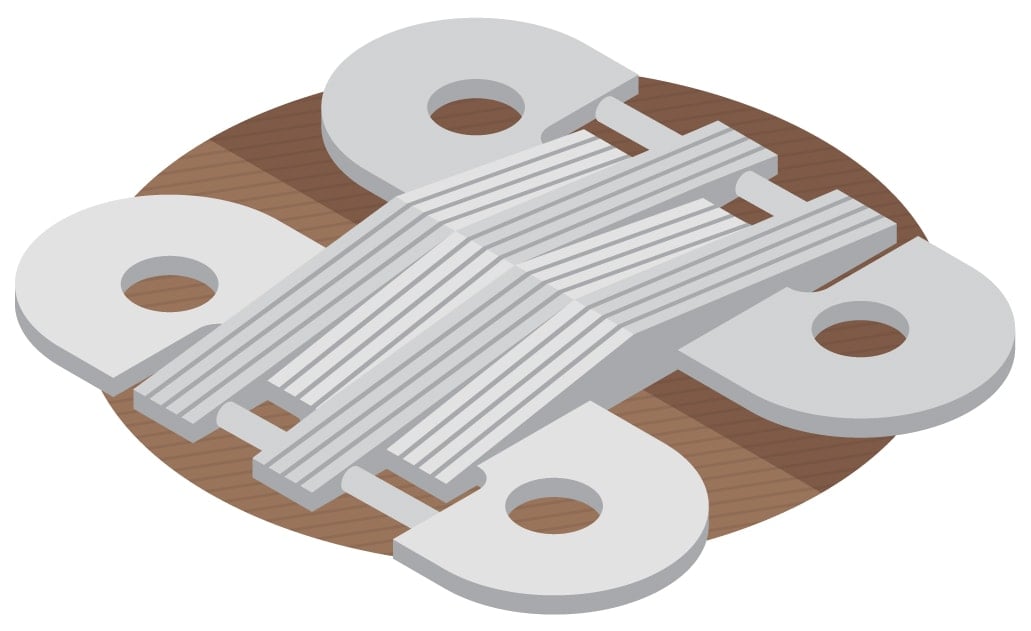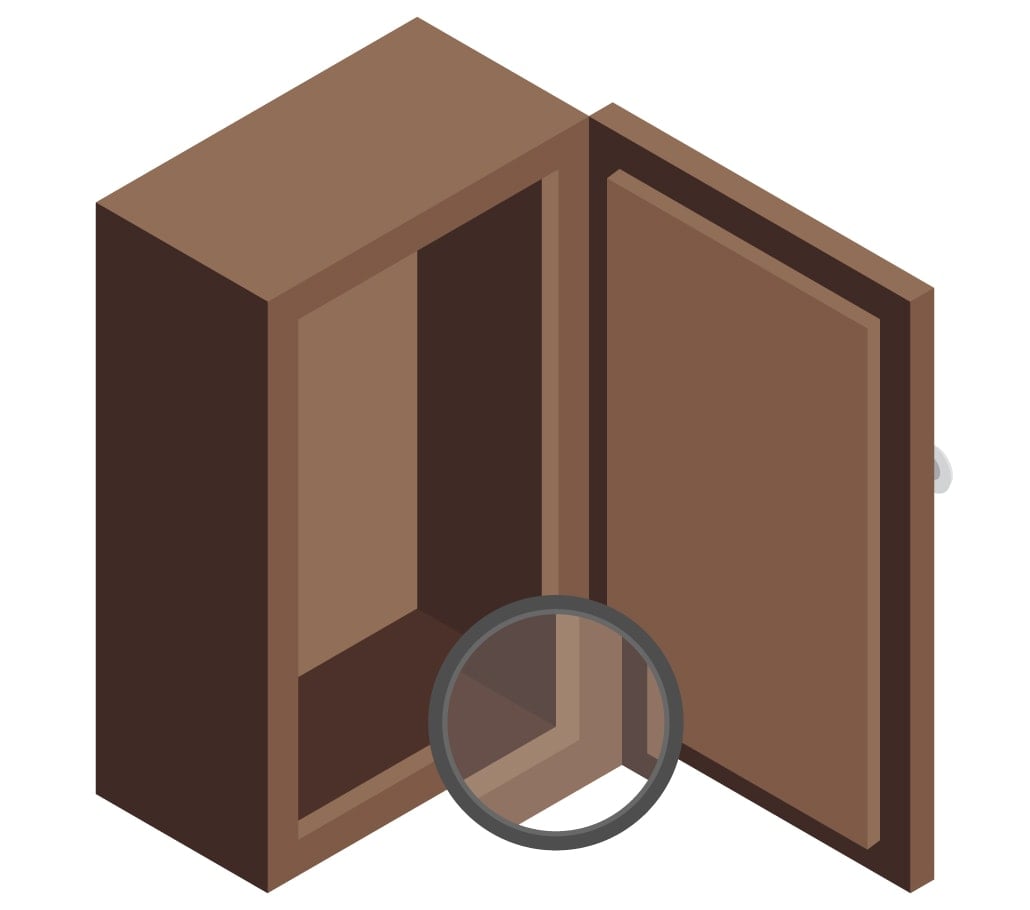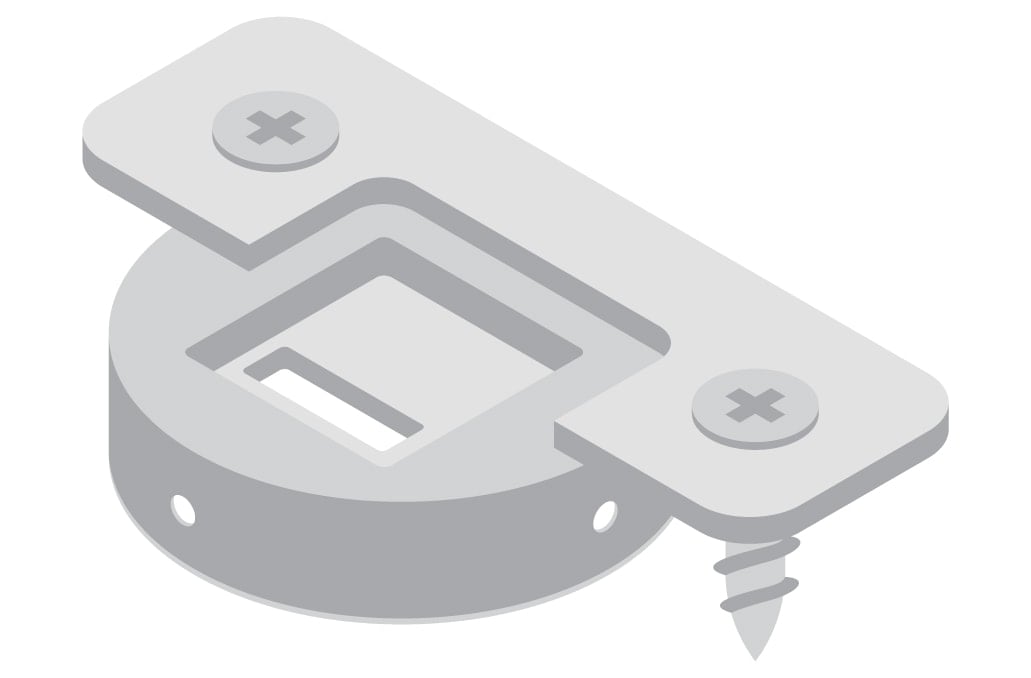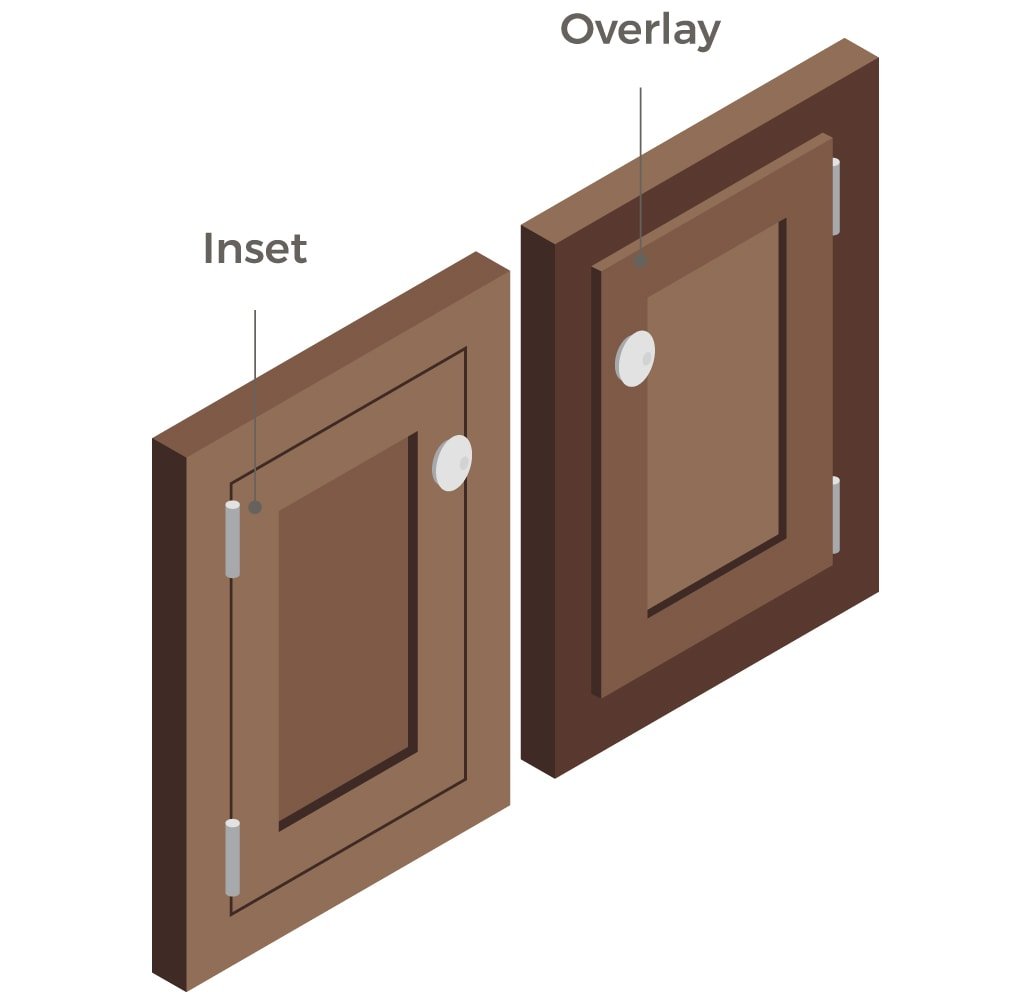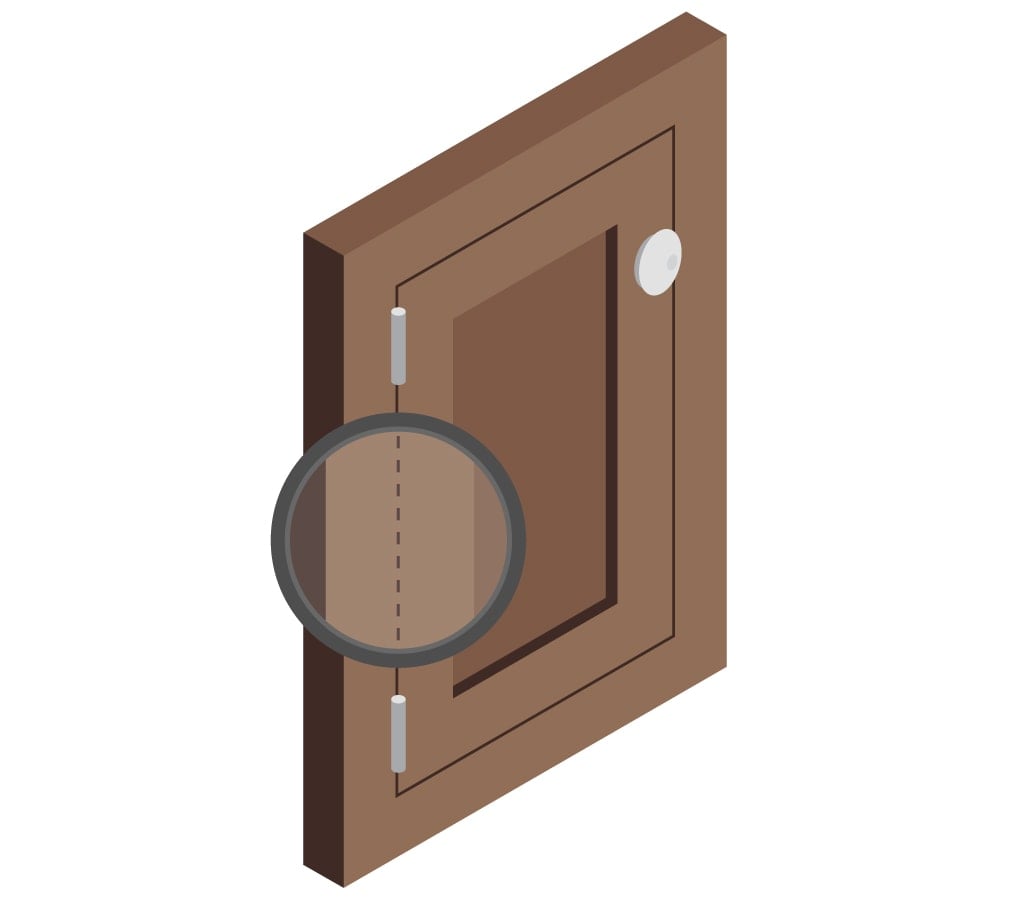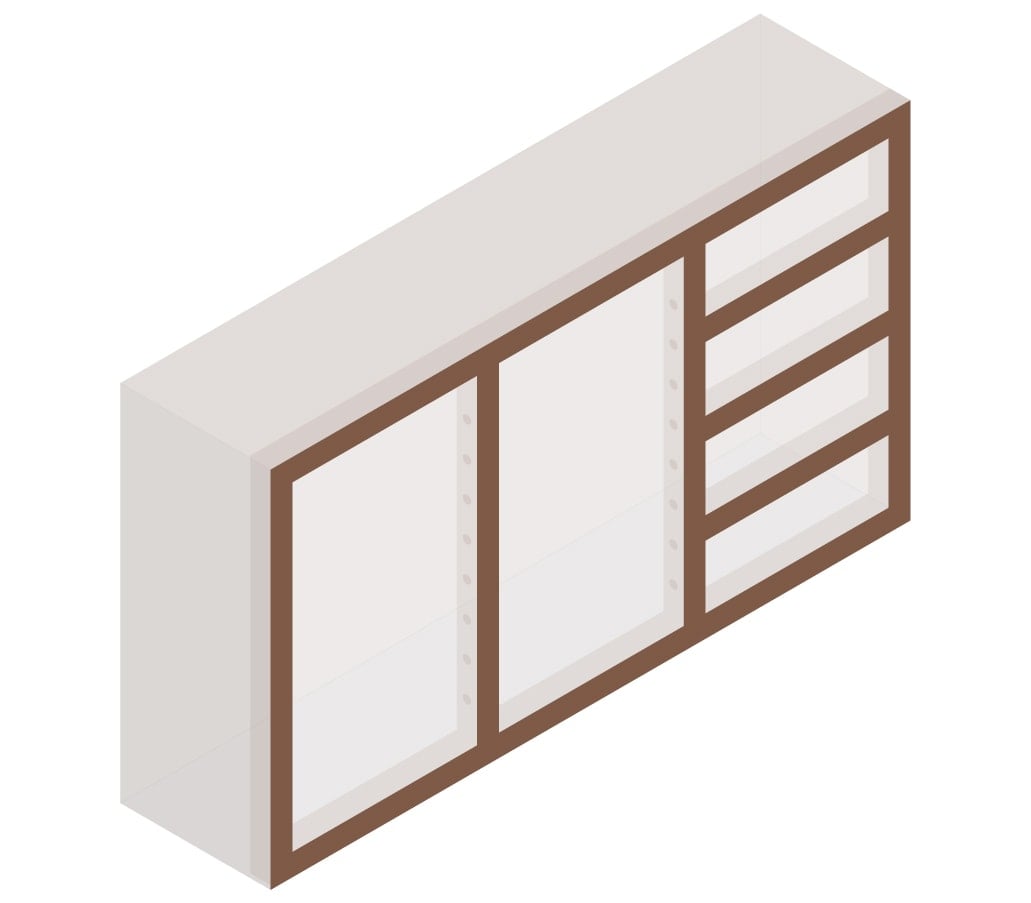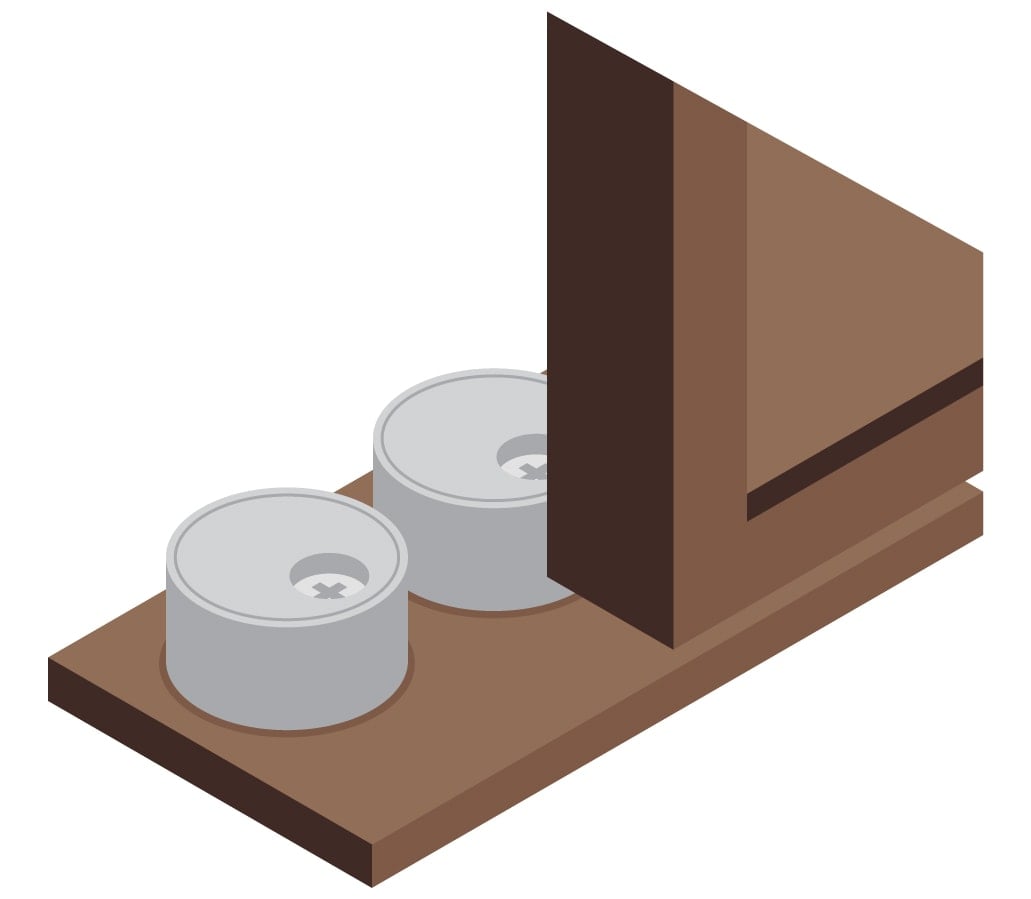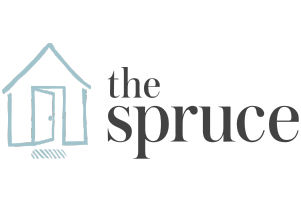For a door to work properly, it needs a hinge. This little piece of hardware comes in a variety of shapes, sizes and uses, each dependent on the project it's being used for. Picking the right one matters for functionality and your personal style. But how do you choose the best hinge type for your cabinets?
There are many factors that go into choosing the proper hinge. One thing to consider is if your cabinets are framed or frameless. Framed cabinets incorporate a visible or slightly concealed structural frame. Originally all cabinets were framed so that a hinge could be attached, but hinge design has advanced making frames not necessary. Although they are no longer needed, frames such as trim boards are often added to cabinets for design and additional support.
The other type of cabinets are frameless cabinets. These do not need trim boards, making the cabinets easier to access. They can be produced very efficiently and therefore are appealing to manufacturers.
Whether you have framed or frameless cabinets, you have a personal design choice to make. Visibility and type of installation are the two main design components you should consider. We've detailed the differences in visibility and installation so that you can make a clear choice.
Anatomy of a Traditional Cabinet Hinge
All hinges vary in design, but most follow a similar anatomy to function properly. Use our diagram to understand and communicate about the hinge you need for your project.
- Leaf: The leaf extends outwards from the knuckle, which is typically the part that is screwed into the cabinet door or frame.
- Knuckle: The knuckle connects each leaf together. The pin passes through the open space in the knuckle, creating the pivot point of the hinge.
- Pin: The rod that goes through the knuckle that each leaf pivots around.
- Width: Width is the span of the open hinge.
- Length: Length is the span of the leaf running parallel to the pin.
Visibility: Exposed, Partially Concealed or Concealed?
Below we cover the three main options for cabinet hinge visibility. For each option, we include descriptions on how the hinge works, its history and its proper use.
Exposed Hinge
An exposed hinge is one where the hinge pieces are attached to the front side of the cabinet's face, making them completely visible. The exposed hinge is the oldest type of hinge and popular with those who are interested in achieving an element of antiquity in their kitchen design.
Partially Concealed
Partially concealed hinges only have the knuckle visible at the seam of the door where it aligns with the cabinet face frame. Partially concealed hinges are usually very plain because they are for function rather than decoration.
Concealed Hinge
Also known as “European Style,” concealed hinges are a type of hinge that lays flush with the door to mask the hinge's location. This is a popular option because it can easily be adjusted using the little screws. Removing the cabinet door is often easier because the hardware doesn't need to be completely removed from the door. The three basic styles of concealed hinges are full overlay, half overlay, and insert. They are also known as invisible because they are not able to be seen when the door is closed.
Installation: Surface Mounted or Mortised?
Now that you understand the differences in visibility and installation, we've applied the terms to common types of cabinet door hinges so you know what to expect.
A surface mounted hinge is a type of hinge that is attached without a mortise being cut into the door or frame. One leaf of the hinge is secured to the door and the other to the frame. It's a flat hinge that can be exposed or concealed, depending on your desired final look.
Types of Cabinet Door Hinges
Pivot Hinge
Visibility: Concealed
Installation: Mortised
Pivot hinges pivot on a single point rather than around a pin. A common example is the knife hinge. Full overlay, partial overlay and seamless doors can all be constructed using pivot hinges. Because the hinge only rotates on a thin single point axis, it can be difficult to install them level. The door will function improperly if not installed correctly. Pivot hinges tend to be inexpensive and easily hidden, but are significantly more fragile than other types of hinges.
Knife Hinge
Visibility: Partially concealed
Installation: Mortised
A knife hinge is a flat style hinge that is semi-concealed. The knife hinge has the capability to fully open and allow doors to rest completely flat against the neighboring cabinet without requiring much metal visibility. The visible part of the hinge is usually the pin, or axis point. The hinge is mortised into the frame and top or bottom of the cabinet.
Pin Hinge
Visibility: Exposed or Partially Concealed
Installation Surface Mounted or Mortised
A pin hinge is a traditional hinge style that rotates on a vertical axis maintained by a single pin. Pin hinges are usually constructed with two moving leaves that are wrapped around a pin. They are common not only on cabinet doors, but also on interior and exterior doors. This is a classic and affordable look, but can also be dressed up with decorative leaves that embellish the seams of cabinetry.
Butt Hinge
Visibility: Exposed or Partially Concealed
Installation: Mortised
Also known as a Mortise hinge, a butt hinge is commonly used in homes in the United States. They are often used in pairs on doors. Butt hinges consist of two matching leaves that are connected by a central pin and barrel system. One leaf is mortised, or recessed, into the door while the other is attached to the jamb. This allows the door to sit perfectly flush with the jamb.
T-Hinge
Visibility: Exposed
Installation: Surface Mounted
The T hinge clearly gets its name from its shape. When attaching the T, the horizontal part is secured onto the door frame while the vertical section is screwed to the door. T hinges are usually known for their durability rather than aesthetics.
Soss Hinge
Visibility: Concealed
Installation: Mortised
A soss hinge is an invisible hinge that is used on inset cabinet doors. It is completely concealed when the door is closed. The hinge is attached by cutting deep mortises into both the door and cabinet frame.The deep mortises give the door strength and support. Soss hinges can also be used on furniture and countertops with lift panels.
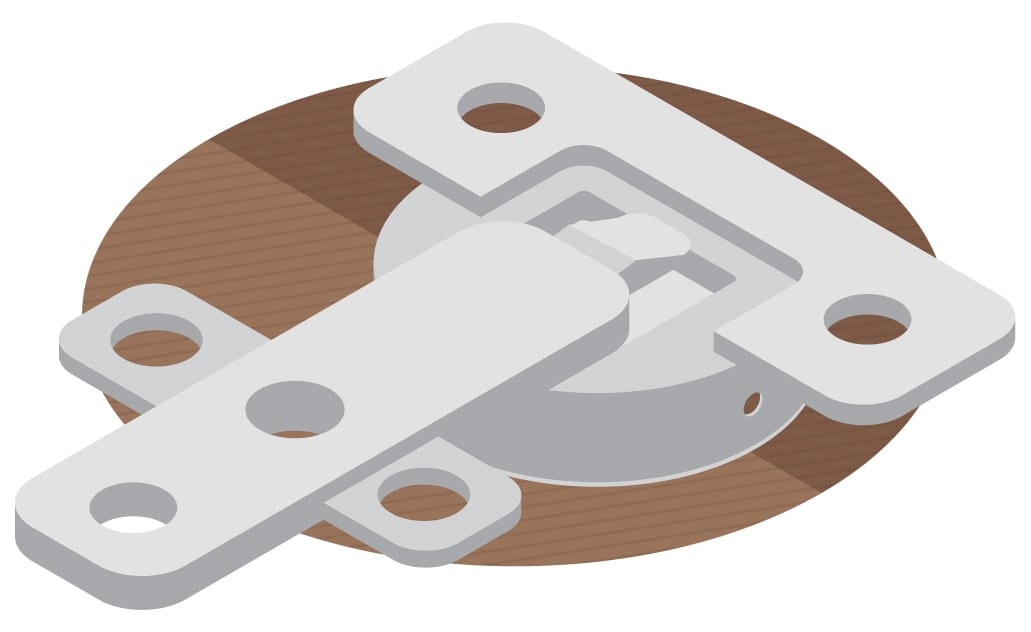
Cup Hinge
Visibility: Concealed
Installation: Mortised
The cup hinge is also known as a European hinge. The original European hinge earned its name because in Germany and throughout Europe, cabinets were personal property. Even renters would take their cabinets with them. The cup hinge gives great versatility, can be used on frameless cabinets and allows for horizontal and vertical door-alignment. These attributes made it popular in Europe in the past and make it favored today as well.
Terminology for Installing your Cabinet Door
Learn the proper terminology for cabinet door hinge installation with our helpful terminology list. This list will be especially helpful to those planning to do a DIY hinge installation.
Lipped
This term refers to kitchen cabinet doors that are styled similar to inset doors, in which part of the door sits flush into the frame. The difference is that lipped cabinet doors retain an overlay on the frame face, fitting more securely into the framing of the cabinet. They require a knob or pull to open because of this secure fit.
Mounting plate
A mounting plate is the part of a hinge, handle or latch that mounts the hardware to a cabinet. Mounting plates make it easier to attach doors to frames.
Hinge cup
A hinge cup refers to a recession that is required for setting certain styles of invisible hinges. It is one part of the invisible hinge that, along with the arm, makes up the movable half of the door mechanism.
Self-close mechanism
A self-close mechanism is a device that is used to prevent doors or drawers from slamming shut. It may be a hinge or a drawer slide.
Inset doors and drawers
Inset drawers and doors form a flush surface with the front face of a cabinet when they are fully closed. Although it is a highly sought after style, the craftsmanship typically costs 20 percent more for any inset shelving project.
Full-inset
A full-inset refers to the type of door that is completely flush with the cabinet's face frame when it's closed. This prevents unsightly gaps between the door and the cabinet's frame.
Face frame
Face frame is a reference to a framed cabinet's trim boards that are visible on its face. The face frame is comprised of boards that form a rigid skeleton for the exposed side of the cabinet's box.
Door stopper
Door stoppers are the devices used to control, limit and stop the motion of a cabinet door. There are many modern hinges that have one incorporated into the design. The purpose of a door stopper is to help prevent damage to a trim board, door or the neighboring cabinetry.
Reveal
A reveal is the part of the cabinet frame that can be seen after the door is attached. A reveal overlay occurs when there is slight space between cabinet doors that allows the cabinet's frame to be viewable.
Now that you've read through our comprehensive cabinet door hinge guide, you will be prepared to make the best decisions in terms of functionality and aesthetics for your cabinet hinges. If you're planning a DIY installation of your cabinet hinges, check out our ready-to-assemble cabinets that are perfect for an easy DIY project.
Sources: Delson Hinge Corp: Anatomy of a Hinge | Rockler: How to Choose the Right Hinges for Your Project






